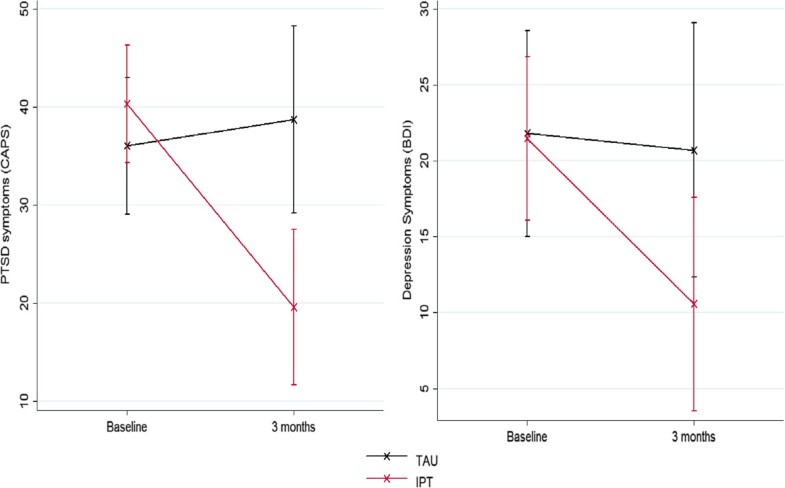Caps Clinician Administered Ptsd Scale Pdf Drawings
Assessment and Treatment of. Center for Deployment Psychology. Uniformed Services. Clinician-Administered PTSD Scale (CAPS). • PTSD Symptom. Clinician-Administered PTSD Scale (CAPS), for both, patients in the active phase of cancer. It uses the Butterfly Hug (Artigas & Jarero, 2014), as a self-administered bilateral stimulation. This protocol is also known as the Group Butterfly Hug Protocol, the EMDR Group Protocol.
Method A total of 112 children between the age of 8 and 18 were recruited at two trauma centers. Children were interviewed with the CAPS-CA and the Anxiety Disorders Interview Schedule Child (ADIS-C) version, and each filled out the Children's Revised Impact of Events Scale (CRIES-13), the Revised Child Anxiety and Depression Scale (RCADS), and the Strength and Difficulties Questionnaire (SDQ).
One caretaker of each child was also interviewed by means of the ADIS Parent (ADIS-P) version and filled out the RCADS and SDQ. Participants Our final sample consisted of 112 children, with 105 treatment seekers at two centers for child and adolescent psychiatry (de Bascule; child and adolescent psychiatry of the Academic Medical Center (AMC) in Amsterdam, and the Mental Health Institution Rivierduinen; child and adolescent department in Leiden) and seven children who were screened for PTSD after having been treated at the emergency department of the AMC.
So apologies to Nero it does work and very well and is a good substitute for Nero 9 which stopped working and then wouldnt open after downloading an upgraded version. I think that something mught have gone wrong while downloading it originally, as now it works perfectly and I can add my own pictures for the background which is great.  I did this programme a disservice when I put my first review on-line, since reading the review from acat550 I downloaded it again after clearing everything belonging to Nero off of my computer. So ignore my first review.
I did this programme a disservice when I put my first review on-line, since reading the review from acat550 I downloaded it again after clearing everything belonging to Nero off of my computer. So ignore my first review.
We interviewed 34 of the treatment-seeking children for a second time post-treatment. A total of 102 caregivers were willing to participate in the interview and/or to fill out the questionnaires.
Children were excluded from the study for the following reasons: being younger than 8 or older than 18 years; had sought treatment less than a month after the adverse event; were diagnosed with a present or past diagnosis of schizophrenia; and were not able to complete the CAPS-CA interview due to insufficient knowledge of the Dutch language. The mean age was 12.92 years (SD=3.44, range 8–18 years). Further demographics are presented in. Children were exposed to a variety of adverse events. Most frequent single traumatic events were: traffic accident (15.2%), sexual abuse (8%), and assault with a weapon (7%).
Sexual abuse and domestic violence were the most frequently reported chronic traumatic events, with 11.6% and 8.3%, respectively. Procedure Children and their caretakers were asked for their participation during the standard intake procedure. Those willing to participate signed an informed consent form. At T1, trained psychologists administered the CAPS-CA. Approximately 3–10 days later (T2), a psychologist who was unaware of the result of the CAPS-CA, administered the ADIS-C to the child. One caretaker was interviewed by means of the ADIS-P at either T1 or T2.

Questionnaires were administered to the child and the interviewed caretaker at T1 or T2. Data were collected as part of a larger clinical study.
Dungeon siege 2 review. This study has been approved by the local ethical committee. CAPS-CA (Nader et al., 2006) The CAPS-CA is a standardized clinical interview developed to assess PTSD conform the DSM-IV-TR standards. The duration of the interview can vary between 30 and 75 minutes, depending on the age and trauma history of the child. The core traumatic event is chosen on the basis of the life-events checklist, which inquires about various possible traumatic events. If the core traumatic event is actually a sequence of events, which is often the case in domestic violence, a brief term is chosen to capture the core of these events. For each of the 17 PTSD symptoms, the interviewer can rate the frequency and the intensity on a five-point Likert scale.
